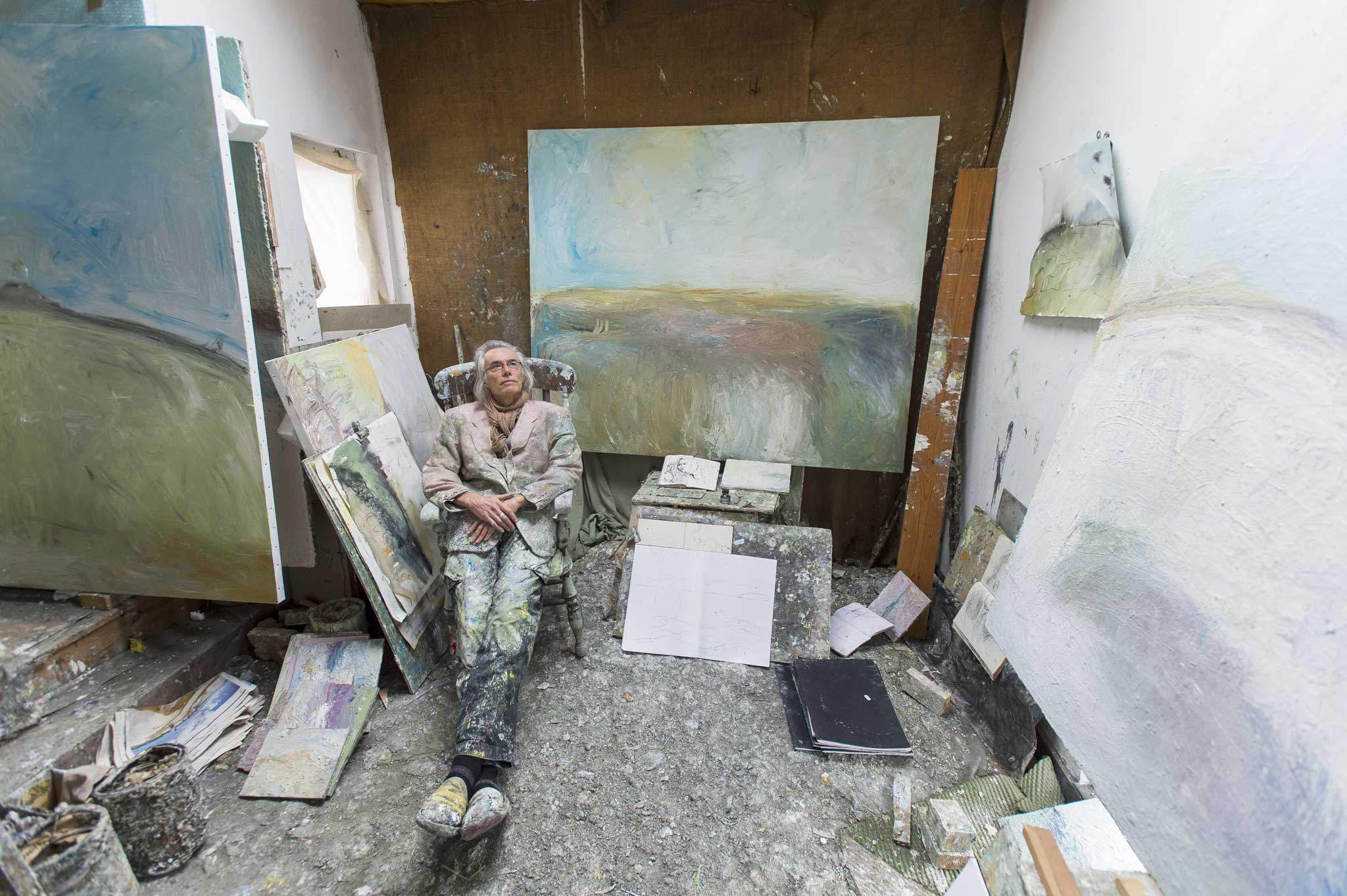In The Studio: Richard Cook, painter
'There is a force that has to emerge untouched and that is the painting'

Richard Cook initially moved to Cornwall to get more space to paint. He was living in a flat on Hampstead Heath, studying at the Royal College of Art, when he found a house in Newlyn where he and his partner, fellow painter Partou Zia, now sadly deceased, could live and work together.
The house is tucked away down a back street of Newlyn, and would have a great view of the sea but for a large painting that obscures the window – a view of the Black Mountains in Wales. It's a subject that Cook has often returned to: "I did a series of drawings there and the painting happened three or four years later. It's not thinking, it is engendering, and the thing comes out when it's ready." Cook is someone who chooses not to go looking for new places to observe, preferring, he says, to plough his furrows more deeply, returning to "his" fields over and over.
Cook's studio is upstairs; the floor, studded by years and years of paint, is uneven and difficult to stand on. The walls are lined with still-wet paintings, while books and sketch-books lie open nearby, some revealing rapid pen and ink drawings, others showing more finished and muscular watercolour studies.
We have been talking about Courbet and he points at some drawings he had made from Courbet when he was last in the National Gallery, as well as an open catalogue from Courbet's show under an easel. "I could not have set this up," he says, laughing. "I love Courbet. There is a poetic understanding of the world that I feel at one with. All painting goes back to Courbet and Manet. It is a passing on of a sort of truth and knowledge."
While studying with Leon Kossoff, Cook recalls when Kossoff approached him sketching in the library and said, "They are very good but can you be a little more primitive." "He released something in me and became a sort of father, but then I had to go my own way. I have set myself free from that."
The confidence and insight that Cook expresses about his own technique may help explain the making of the works. The actual execution of a large painting can be extremely fast, taking only three, four or five minutes. "I paint with my hands. I don't look. There is a force that I have to allow to emerge untrammelled and untouched and that is the painting".
The canvasses reveal the speed in which they were created by their spare use of paint and large gestural brushstrokes. They have an unmistakably raw energy. His self-assurance comes through as he proclaims, "I am not really a Cornish painter, I am Richard and I am a painter and I have a lot of belief in what I am doing."
Join our commenting forum
Join thought-provoking conversations, follow other Independent readers and see their replies
Comments
Bookmark popover
Removed from bookmarks